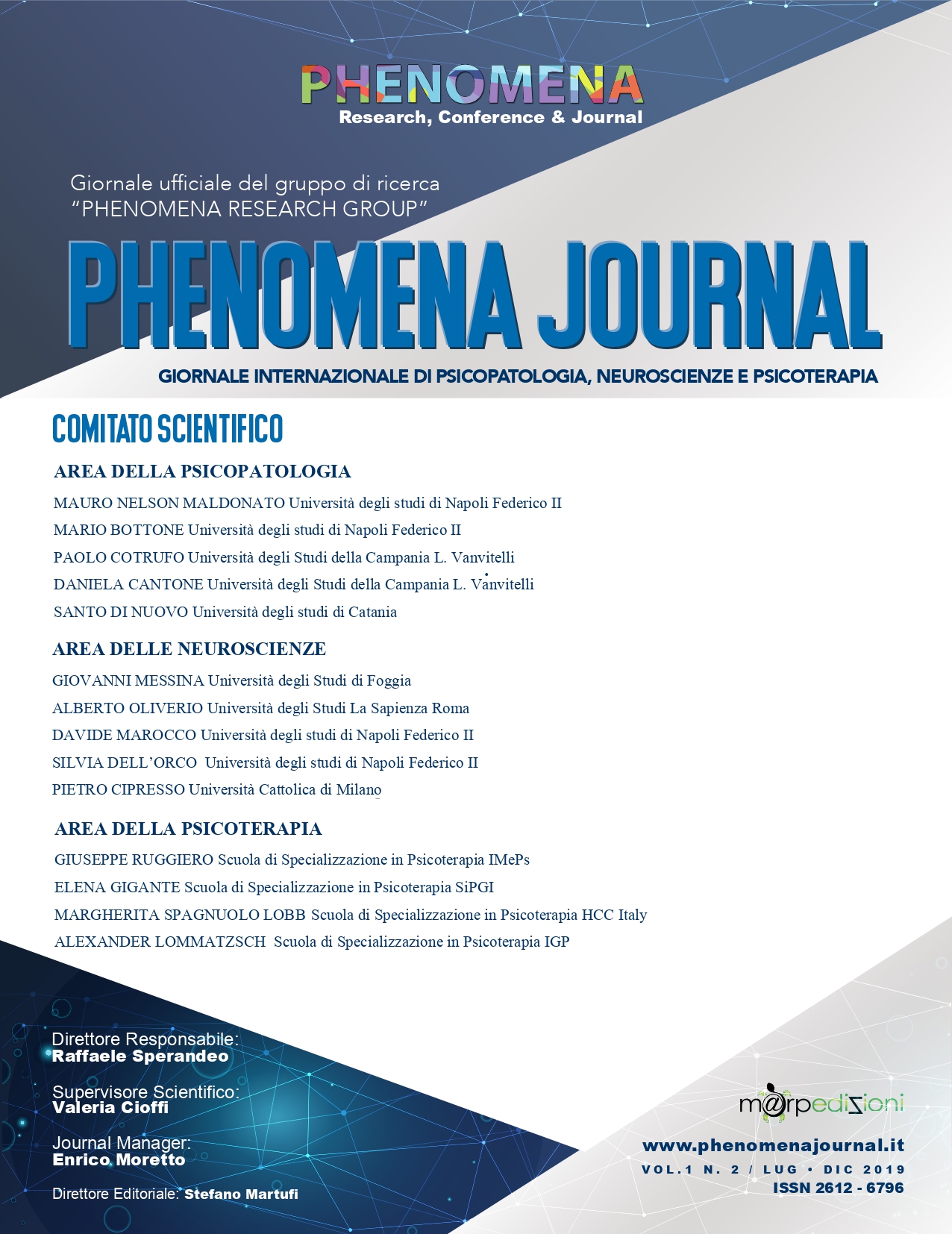Published 2019-11-13
How to Cite
Abstract
In the twentieth century, Existentialism brings about a radical change in the history of thought. According to such approach the most crucial issue is not the search for Truth, but rather what each individual wants to do with one’s own existence. With Husserl, Existentialism becomes Phenomenology, the theory of intentional perception according to which each organism, through perception, gives structure and meaning to the world. This perspective supports a dynamic way of being and makes space for the “I” and the “You”, thus knowledge becomes intersubjective. Constructivism is consistent with existentialism as it introduces the concept of narrative truth rather than absolute truth. Narrative truth emerges in a space that in the Gestalt tradition is called void, in this instance, fertile void. This void is where things happen,where they can develop. Thus, avoiding the void interrupts the continuous and natural process of existence. Considering void a hardly definable, subjective experience, the idea of the current research arises from the desire to identify a common phenomenology to the experience of the fertile void. In this study shall use the method of phenomenological analysis to describe such experience. The group shall meet t o reflect upon the way inwhich the fertile void is experienced how the perception of self and of the environment changes, and upon the experience of contact when void is felt and sensed. shall be organized systematically in order to build a methodological tool for a common conceptualization of the experience of the “fertile void”.
References
- Quattrini, G. (2013). Per una Psicoterapia Fenomenologico-Esistenziale. Giunti.
- Caprara, G., Gennaro A. (1999).Psicologia della Personalità. Il Mulino.
- Ruina, F. (2014). Lacan e l’estetica del vuoto, Aperture, 30.
- Heidegger, M. (1991).La cosa. In:Vattimo, G. (trad.it. a cura di)Saggi e discorsi.Milano: Mursia.
- Grotstein, J. S. (2010). Un raggio di intensa oscurità: l'eredità di Wilfred Bion. Raffaello Cortina.
- Casini, C. (2017).Mi sento vuoto. Dal vuoto come mancanza al vuoto come spazio per il cambiamento,Rivista Italiana di Costruttivismo, n.4.
- Castellano, L. (2011). Come la Gestalt ci aiuta a vivere meglio. Dalla Psicoterapia alla filosofia di vita.Napoli: Edizioni RCE Multimedia.
- Perls, F.S. (1980).La terapia gestaltica parola per parola. Roma:Astrolabio.
- Peñarrubia, F. (1998). Terapia Gestalt: La vía del vacíofértil. Alianza Editorial..

